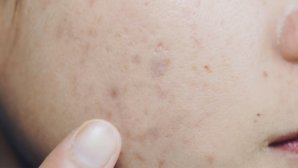Acupuncture is a form of traditional Chinese medicine that involves the insertion of thin needles into the skin at specific points on the body to stimulate the flow of energy or "qi" along pathways or "meridians" that are believed to be related to various physiological and psychological functions.
What are meridians in acupuncture?
In acupuncture, meridians refer to a network of pathways or channels through which energy, known as "qi" or "chi," flows throughout the body. These pathways are believed to connect different parts of the body and correspond to specific organs and bodily functions. According to traditional Chinese medicine, disruptions or blockages in the flow of qi through the meridians can lead to various health problems.
In Traditional Chinese Medicine (TCM), there are twelve main meridians, which are also known as the primary meridians. In addition to the twelve primary meridians, there are also eight extraordinary meridians, also known as the secondary meridians.
12 primary meridians-
- Lung meridian (LU)
- Large Intestine meridian (LI)
- Stomach meridian (ST)
- Spleen meridian (SP)
- Heart meridian (HT)
- Small Intestine meridian (SI)
- Bladder meridian (BL)
- Kidney meridian (KI)
- Pericardium meridian (PC)
- Triple Burner meridian (TB)
- Gallbladder meridian (GB)
- Liver meridian (LR)
The 8 secondary meridians-
- Governing Vessel (GV)
- Conception Vessel (CV)
- Penetrating Vessel (PV)
- Girdle Vessel (GV)
- Yang Heel Vessel (YHV)
- Yin Heel Vessel (YnHV)
- Yang Linking Vessel (YLV)
- Yin Linking Vessel (YnLV)
Each meridian is associated with specific organs and functions in the body, and they are believed to play an important role in the circulation of qi (vital energy) throughout the body.
Is acupuncture painful?
Acupuncture involves the insertion of thin needles into specific points on the body, and the level of pain or discomfort experienced can vary from person to person. Some people may feel no pain or discomfort during the procedure, while others may experience a mild to a moderate sensation of pressure, tingling, or warmth.
In general, the needles used in acupuncture are very thin and flexible, and the practitioner will aim to insert them gently and quickly to minimize discomfort. If you feel uncomfortable during the treatment, it's important to let your acupuncturist know so they can adjust the needles or technique as needed.
Overall, while some people may experience mild discomfort during acupuncture, many find the treatment to be relaxing and painless. If you are considering acupuncture and have concerns about pain, it may be helpful to discuss your concerns with a licensed acupuncturist and try a session to see how it feels for you.
What kind of illnesses can acupuncture treat?
Acupuncture practitioners use fine needles inserted into specific points along the meridians to stimulate or balance the flow of energy and restore health. Different points on the meridians correspond to different symptoms or health concerns, so acupuncturists choose specific points based on a patient's individual needs. While there is ongoing scientific research into the efficacy of acupuncture, it is a widely practiced and popular form of complementary and alternative medicine around the world.
While scientific research on acupuncture is ongoing and the mechanisms by which it works are still not fully understood, some studies suggest that acupuncture may be effective for a range of conditions, including:
- Pain conditions: including back pain, neck pain, osteoarthritis, and migraine.
- Mental health conditions: including anxiety, depression, and insomnia.
- Women's health issues: including infertility, premenstrual syndrome (PMS), and menopausal symptoms.
- Digestive issues: including irritable bowel syndrome (IBS) and nausea.
- Respiratory conditions: including asthma and allergies.
- Neurological conditions: including stroke and Parkinson's disease.
It is important to note that acupuncture should not be used as a substitute for conventional medical care and that patients should consult with a qualified practitioner and their primary care provider to determine the best treatment plan for their individual needs.




















































Pest infestations, such as termites, can weaken the structural integrity of a mobile home over time. Must explore what is mobile home removal services. Most insurance policies do not cover damage caused by pests, meaning removal costs for an uninhabitable due to infestation are usually not covered.Â